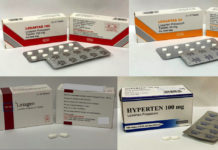(Middle East Respiratory Syndrome) MERS cases are on the rise. Formally confined to the Middle East, the virus recently caused an outbreak in South Korea, raising concerns about the disease spreading to Singapore. While there is no need to panic yet, Health Minister Gan Kim Yong says “MERS will arrive in Singapore sooner or later”. The best thing we can do, is to arm ourselves with knowledge about this disease.
What is MERS?
Middle East Respiratory Syndrome (MERS) is a viral respiratory disease caused by a new coronavirus (MERS-CoV). The first case occurred in 2012 in Saudi Arabia. Most people infected with MERS-CoV developed severe acute respiratory illness, including fever, cough, and shortness of breath, and even death.
Where did MERS Come From?
MERS is thought to be of animal origin – recent studies suggest camels as a likely source of infection, although the transmission mechanism remains unclear. MERS, like SARS, could have originated from bats.
How is MERS transmitted amongst humans?
MERS-CoV is transmitted between humans among close contacts, as demonstrated by family and hospital clusters reported thus far. However, sustained human-to-human transmission in the community has not been observed.
It is reasonable to believe that MERS, like SARS, is transmitted most readily by respiratory droplets (droplet spread), produced when an infected person coughs or sneezes.
Close contact is defined as:
- a) Being within approximately 2 meters or within the room or care area for a prolonged period of time while not wearing recommended personal protective equipment; or
- b) Having direct contact with infectious secretions (e.g. being coughed on) while not wearing recommended personal protective equipment
What is the Transmission Rate of MERS?
The rate of human to human transmission among household contacts of patients with MERS-CoV infection is approximately 5%, in a study in 2014.
What are the signs and symptoms of MERS-CoV infection?
People infected with MERS-CoV typically experience fever, cough, shortness of breath and pneumonia.
One third of symptomatic cases have experienced gastrointestinal symptoms. Not everyone falls sick with MERS: some people remain asymptomatic, and are detected through contact tracing and testing of contacts of confirmed cases.
MERS-CoV infection can result in severe illness, causing respiratory failure that requires mechanical ventilation and support in an intensive care unit. Some patients may develop organ failure, especially of the kidneys, or septic shock. Older people, people with weakened immune systems, and those with chronic diseases such as cancer, chronic lung disease and diabetes appear to be at greater risk for developing severe disease from MERS-CoV.
How long does it take for someone infected with MERS-CoV to develop symptoms?
The incubation period for MERS-CoV ranges from 2 to 14 days (median of 5 days).
(The Incubation period of a disease is the period between exposure to an infection and the appearance of the first symptoms.)
Is there any treatment or vaccine for MERS?
No vaccine or specific treatment for MERS-CoV infection is currently available. Treatment is supportive and based on the patient’s clinical condition. More severe cases will require intubation (insertion of a tube down the windpipe), ventilatory support, drugs to increase heart function, and other intensive treatments to support body functions.
South Korea began tests last week on using convalescent plasma therapy to treat infected patients.
Drugs given for MERS include antivirals (ribavirin, lopinavir and ritonavir), corticosteroids, type I interferon (IFN), intravenous immunoglobulin (IVIG), and convalescent plasma therapy.
What is Convalescent Plasma Therapy?
Convalescent plasma therapy involves extracting plasma (the pale yellow liquid component of blood) from disease survivors, and transfusing it to sick patients. It is a form of passive immunotherapy – it uses the immunity from recovered patients to fight the disease in still sick patients.
Serum therapies were successfully used to treat many infectious diseases (anthrax, plague, scarlet fever, measles, tularemia, diphtheria, dysentery, meningococcal meningitis, rabies, pneumococcal pneumonia) in the early 20th century. However, its use greatly decreased after the antibiotic therapies and vaccines became a safer alternative – serum therapies carry the risks associated with blood transfusions: for example, transmission of diseases such as Hepatitis B, allergic reactions, and acute respiratory distress syndrome.
Convalescent plasma therapy was used to treat some patients in the Ebola outbreak in Africa in 2014. Although numbers are too small to conclude its efficacy, the results are promising. In veterinary medicine, plasma transfusions are also used to treat dogs infected with Canine Distemper and Parvovirus, both which have a high mortality rate.
Covelscent Plasma Therpay was also used for treatment during the 2003 SARS outbreak. Studies measuring the outcome from plasma therapy, however, were inconclusive, because the effect of convalescent plasma or IVIG could not be discerned from effects of patient comorbidities, stage of illness, or effect of other treatments.
What is the Mortality Rate of MERS?
The CDC reports a fatality rate of 30% from MERS. Mortality rates range from 15% in the recent South Korea outbreak, to as high as 41% in Saudi Arabia.
Are MERS and SARS Similar?
The Severe Acute Respiratory Syndrome (SARS) outbreak of 2003 is still etched deeply in our minds. It infected 238 people, and claimed 33 lives in Singapore. There are some important similarities and differences between SARS and MERS.
Similarities:
- Similar Pathogens: Both MERS and SARS are caused by Coronaviruses, a large family of viruses that are very common – 4 of the 6 coronaviruses which can infect humans (alpha coronaviruses 229E and NL63, and beta coronaviruses OC43, HKU1) cause upper respiratory tract infections like sore throat, runny nose, with or without fever. The other 2: SARS-CoV and MERS-CoV, cause SARS and MERS respectively.
- Likely Similar origins: Both SARS and MERS are thought to have originated from animals – SARS started in China, thought to have originated in bats, who passed the infection to civet cats, then humans. MERS is also thought to have originated in bats, possibly passed on to camels, then humans.
- Likely Similar Transmission: Both SARS and MERS are transmitted amongst close contacts, likely via respiratory droplets. Hence, standard personal protective equipment is important when coming into contact with possible infected persons.
Differences:
- MERS spreads less easily than SARS: MERS is less infectious than SARS in terms of person-to-person spread, both in and outside of hospitals. However, this may change with the advent of super spreaders or a mutation in the MERS virus – as it did with the SARS virus.
- MERS is more severe in older, sick people, compared to SARs which affected young, healthy individuals: In the SARS outbreak, the cases were primarily seen in young healthy individuals, whereas more than half of the MERS cases have been in individuals older than 50 years. More than 70% of severe disease and deaths in MERS occurred in people with comorbidities. Young, healthy MERS sufferers tend to have asymptomatic-to-mild disease.
- MERS has a higher reported death rate: The mortality rate of MERS is 30%, meaning there is a 1 in 3 chance you will die form it once you develop the disease, compared to a mortality rate of 10% in SARS. However, these figures may not be accurate, as mild MERS cases are likely to go unreported and unrecognized, seeing that it causes only mild disease in young people.
Which Countries are Affected by MERS so Far?
 A total of 26 countries have repoted MERS cases. Saudi Arabia is the country hardest hit by MERS, followed by South Korea. Other countries with reported cases include:
A total of 26 countries have repoted MERS cases. Saudi Arabia is the country hardest hit by MERS, followed by South Korea. Other countries with reported cases include:
2015: Oman, UAE, Qatar, China, Thailand, Philippines, Germany,
2014: Algeria, Egypt, Turkey, Yemen, Austria, Malaysia, USA, Jordan, Kuwait, Lebanon, Netherlands
2013: Italy, France, Tunisia, UK
(Note that the reported cases of death from MERS in Johor happened in 2014, not recently as many think)
What is the Total Number of MERS Cases Worldwide?
The total number of reported MERS cases so far is 1350, as of 23 June 2015.
Saudi Arabia has the highest number, with 1034 cases, including 457 deaths.
The 2015 outbreak in South Korea has affected 179 people, with 27 deaths.
What is the Situation of the Outbreak in South Korea?
The ongoing outbreak in the Republic of Korea started from a single person who travelled to the Middle East. Unsuspecting doctors – and failure to recognise the disease early, coupled with poor initial Infection control measures, crowded emergency rooms and multi-bed rooms contributed significanlty to the outbreak in South Korea.
Since the outbreak in May 2015, the number of new cases have started to come down, with the peak number of new cases in early June. Infectious control measurs have since effectively controlled the number of new cases. However, new cases are expected to continue to surface over the next few weeks.

Do I Need to Aovid Travelling to Affected Countries?
All cases in South Korea have been linked to health care facilities where MERS patients were treated, hence there is no need to cancel travel plans. However, be vigilant to wash your hands, and avoid contact with sick people.
As MERS affects people with pre-existing illnesses and the old more, you should consult your doctor if you are above 65 years old, or have illnesses such as chronic heart disease and diabetes, to determine you are medically fit to travel.
What Vaccines Should I Get If I Travel to Affected Countries?
It is advisable to get your annual flu vaccinations.
Travellers to the Middle East and Haj pilgrims should also be vaccinated against meningococus, which can cause meningitis.
Finally, people above 65 years old or with chronic medical illnesses should also be vaccinated against pneumococcus, which can cause pneumonia, meningitis, or blood infection (sepsis).
Does The Influenza Vaccine Protect Me Against MERS? If Not, Why Should I Get Vacicnated?
No, the flu vaccine will not protect against MERS. However, it will prevent you from coming down with influenza, or the flu. Influenza can have similar symptoms to MERS, and if you contract flu on your travels, it can result in unnecessary anxiety, quarantine, and tests – which willl be costly and cause inconvenience (on top of being sick!).
What if I recently traveled to the Arabian Peninsula/ South Korea or neighboring countries and fall sick?
If you develop a fever and symptoms of respiratory illness, such as cough or shortness of breath, within 14 days after traveling from thee countries, you should see a doctor immediately and tell him/her about your travel history. Your doctor will refer you to Tan Tock Seng Hospital or KK Hospital (below 16 yrs old) Emergency Department if he suspects MERS.
While sick, stay home from work or school and delay future travel to reduce the possibility of spreading illness to others.
How do We Test for MERS?
MERS-CoV can be tested in the lab via PCR (polymerase chain reaction) assays – which detects the presence of the virus directly, or serology– which detects antibodies to the virus.
Do I need to Panic About MERS Coming to Singapore?
To date, there is no case of MERS-CoV in Singapore but the possibility of an imported case here cannot be ruled out given today’s globalised travel patterns. WHO has assessed that the current outbreak of MERS in South Korea does not constitute a Public Health Emergency of International Concern. Nevertheless, we remain vigilant to the possibility of an imported case of MERS from South Korea.
However, even if there is an imported case, the risk of an outbreak in our community remains low as sustained human-to-human transmission of the virus has not been reported. Singapore’s hospitals are also eady to screen and isolate any suspect cases, and take swift action go contain the outbreak if required.
References:
UPDATE ON MIDDLE EAST RESPIRATORY SYNDROME CORONAVIRUS (MERS-COV) CLUSTER IN SOUTH KOREA
WHO Website: Middle East respiratory syndrome coronavirus (MERS-CoV)
http://www.who.int/emergencies/mers-cov/en/
Position Paper on Collection and Use of Convalescent Plasma or Serum as an Element in Middle East Respiratory Syndrome Coronavirus Response
http://www.who.int/bloodproducts/brn/BRN_PositionPaperConvPlasmaMERSCoV_March2014.pdf
SARS: Systematic Review of Treatment Effects by Lauren J Stockman, Richard Bellamy,Paul Garner
http://journals.plos.org/plosmedicine/article?id=10.1371/journal.pmed.0030343
Frequently Asked Questions About SARS
http://www.cdc.gov/sars/about/faq.html
Transmission of MERS-Coronavirus in Household Contacts
http://www.nejm.org/doi/full/10.1056/NEJMoa1405858
CDC information on MERS
http://www.cdc.gov/coronavirus/mers/faq.html
http://www.cdc.gov/coronavirus/about/index.html
MERS vs. SARS: Compare and contrast
http://www.healio.com/infectious-disease/emerging-diseases/news/print/infectious-disease-news/%7B422866a7-0445-49b3-ac14-54b39bebbba6%7D/mers-vs-sars-compare-and-contrast


















